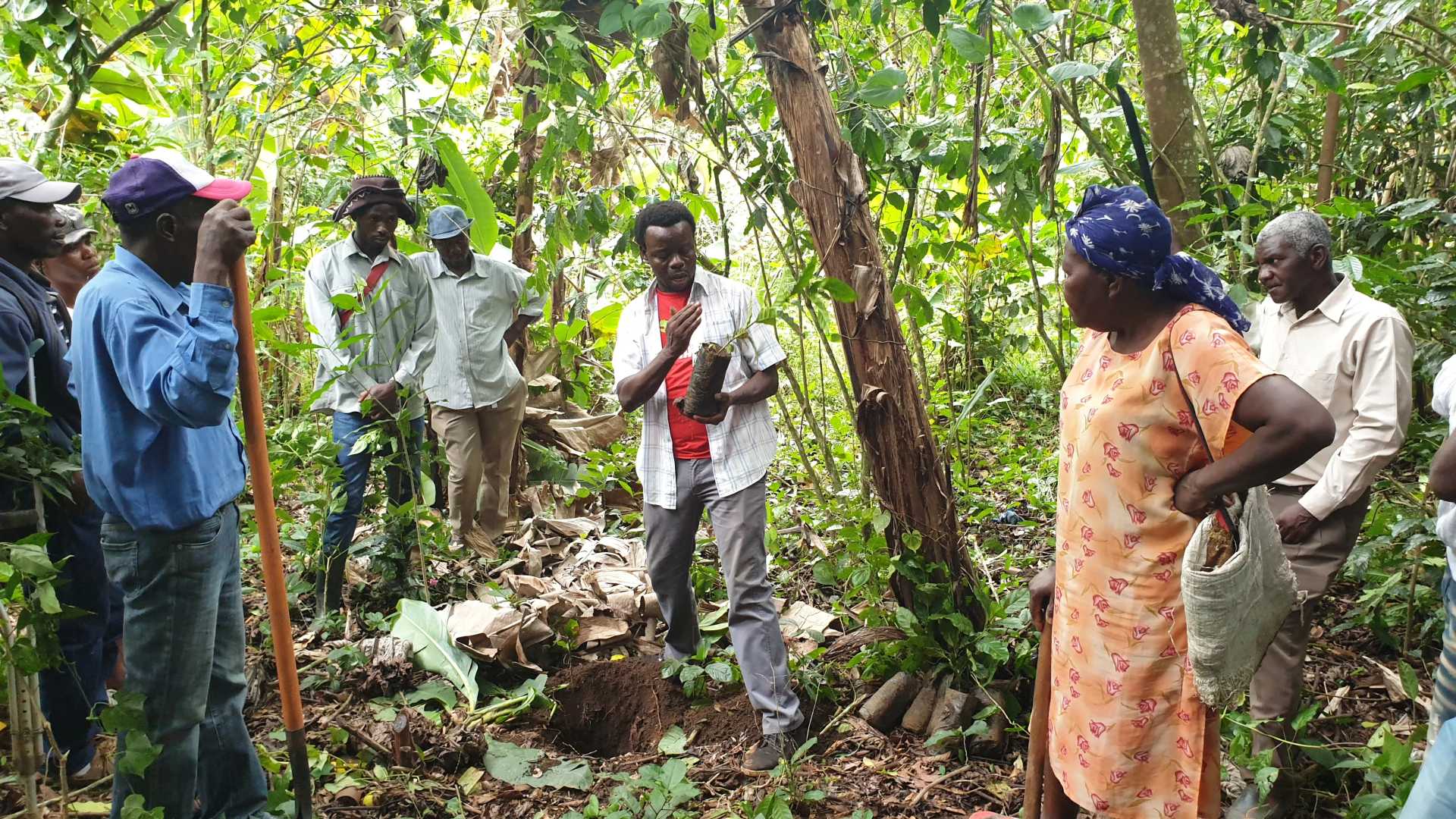The Approach


Ecosystem-based Adaptation to increase resilience against climate change
EbA integrates climate change adaptation with sustainable development and biodiversity conservation, creating synergies between human well-being and ecological health.
Ecosystem-Based Adaptation (EbA) has emerged as a promising strategy that uses the natural protective mechanisms of ecosystems and the services they offer to enable vulnerable rural communities adapt to the adverse effects of climate change. By supporting local engagement and knowledge sharing, EbA becomes a participatory process, reinforcing resilience while preserving traditional practices and cultural ties to the land. At the same time, the EbA approach allows to conserve and restore natural ecosystems and biodiversity, e.g. forested landscapes and the wildlife species living in specific habitats.
The EbA approach is people-centered (anthropocentric), meaning that a key objective is to help communities strengthen their agricultural livelihoods and economic benefits, which depend directly or indirectly on multiple ecosystem services. By transforming and adapting their production systems according to the changing climate conditions, and by conserving and restoring the ecosystem services they depend on, the communities can increase their climate resilience.

The CCR project’s 5 key goals:
Development of EbA solutions
Strengthening local organizations and civil society
Climate-smart agriculture
Integration of EbA into national strategies
Integrated water management
Some of our EbA measures include:
Sustainable land management:
Silvopasture and Agroforestry systems
Erosion Control:
Constructing vegetative barriers and implementing erosion control structures
Reforestation with native tree species
Soil Conservation:
Implementing practices like cover cropping or mulching
Sustainable Agriculture:
Promoting agrobiodiversity, crop rotation, tree grafting and integrated pest management
Fire Management Strategies:
Implementing “fire breaks” in newly reforested areas
Food security:
Family gardens and beekeeping
Sustainable forestry:
promoting natural regeneration and sustainable logging practices
Integrated water management:
improving water supply through grey and green infrastructure
Agroforestry systems promote the simultaneous cultivation of crops and trees on the same land. By blending agriculture with tree planting, they enhance soil fertility, water retention, and biodiversity. The roots of trees bind the soil, reducing erosion and enhancing water infiltration, effectively mitigating the risks of extreme weather events like heavy rainfall and floods. Moreover, agroforestry diversifies crop yields, ensuring food security even amidst climate uncertainties. Mulching allows natural, organic matter to decay as a protective layer on the soil. This reduces soil erosion and increased moisture retention.
Forest restoration revitalizes degraded land and protects against climate change impacts. Forest restoration improves soil fertility as trees enrich the soil with nutrients, enhancing crop growth and yields, and retains rainwater, reducing erosion and ensuring a steady water supply for crops. By reforesting degraded areas, we also establish carbon sinks that absorb atmospheric CO2, mitigating global warming effects. These restored forests also harbor diverse flora and fauna, conserving biodiversity and supporting ecosystem services like pollination and seed dispersal.
Wendy Jaquez, project participant, Dominican Republic
We have learned that if we do not treat the forest as our enemy, but manage it well, we will have greater biodiversity and more fertile soils. This also contributes to more stable food security. In the past, we could only harvest once a year. Now, thanks to our new home gardens, we have lettuce, onions, chard, peppers and cabbage all year round.
Gender
The project applies a gender- sensitive approach in all activities. Integrating gender into EbA is vital for fairness and effectiveness. Gender shapes how communities interact with their environment and respond to climate change. By considering the specific needs, knowledge, and roles of women, men, and groups in vulnerable conditions, EbA initiatives can become more contextually relevant and impactful. This integration aims to ensure equitable access to resources and decision-making, making adaptation efforts more inclusive and resilient.
A multi- level approach: The CCR project works at local, national, and regional levels, aiming at engaging stakeholders to mainstream EbA into public policy.
Incorporating EbA into policy and planning frameworks is essential for its effective implementation. Governments and decision-makers must recognize the value of nature-based solutions and integrate EbA strategies into climate action plans. Adequate funding and support for research and capacity building are crucial to scaling up and replicating successful EbA projects across different regions.

Long term sustainability
A sound contextual understanding of the environmental and socio-economic situation, including analysis of needs, vulnerabilities, capacities, and risks, is the foundation for the CCR project. Suitable EbA measures are identified by initial context- and vulnerability analyses in every project region, followed by the formulation of strategic EbA plans which are to be integrated into local government action plans. Replication models of the EbA plans are developed, which facilitate other stakeholders to replicate the project’s approach, as well as apply for future funding to implement climate adaptation, biodiversity protection, and EbA measures.
The project highlights the synergies between the different paradigms of biodiversity conservation, livelihood resilience and adapted agricultural practices for climate change adaptation and emphasizing the need for regional synergies and systemic approaches.
The project works with scientific research institutions to align its interventions with deeper scientific analyses, for example on biodiversity or ecosystem health. Partners are supported to establish research cooperations, to support project activities (such as trainings or studies) but also to integrate EbA and climate change aspects into curricula of training institutions, so that new technicians can promote EbA after completing their studies and thus increase the impact of the project.
Image gallery
Discover our wonderful gallery

Please get in touch via the contact form.









